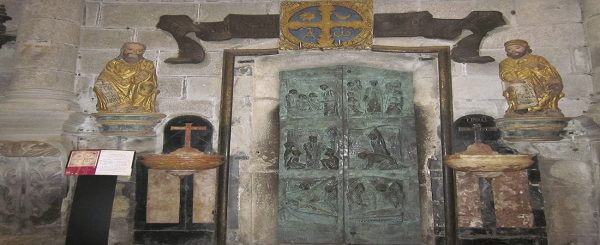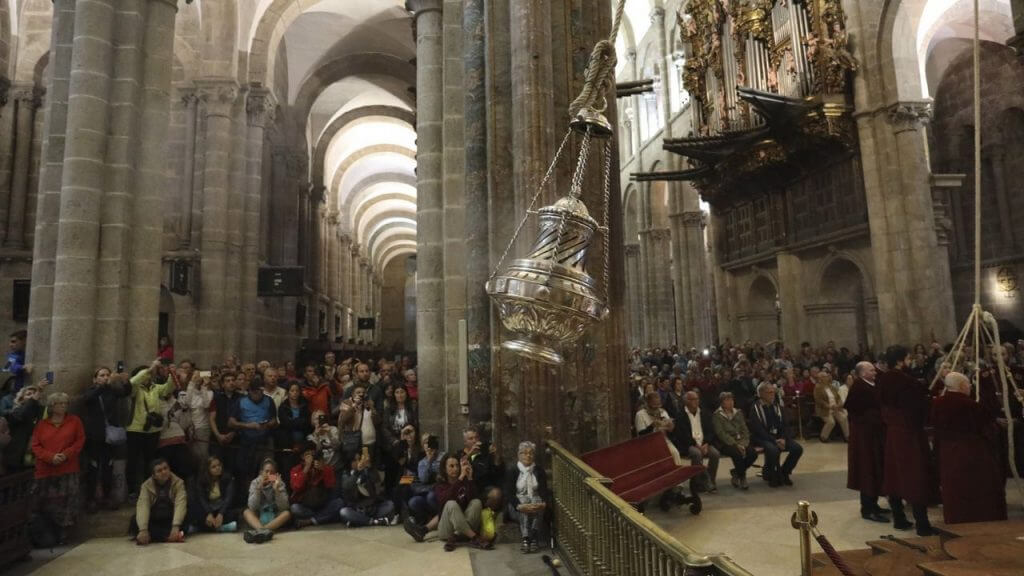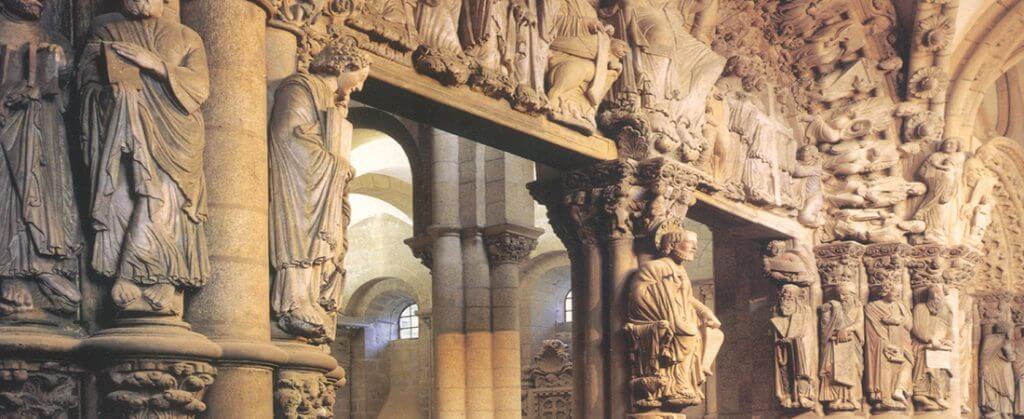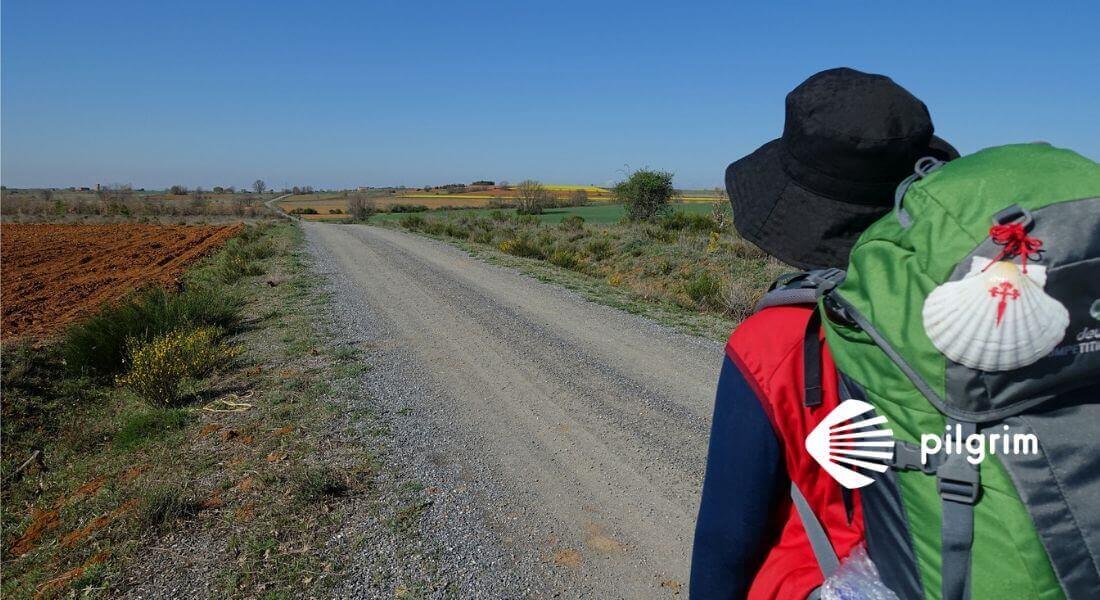Not everyone knows what a pilgrim is or what it represents. Or not everyone knows that there are pilgrimage routes beyond the Camino de Santiago.
YOU MAY ALSO BE INTERESTED: PLANNED CAMINO DE SANTIAGO
What is a Pilgrim?
There is a dictionary meaning that defines the origin of the word and what is meant by it. However, being a pilgrim goes beyond a simple meaning, it embraces much more, it brings together a number of feelings that are not reflected in a definition.
Below, we will define the pilgrim from the original point of view and from our humble point of view:
Literal meaning
According to the definition of the Royal Spanish Academy, a pilgrim is “Said of a person: Who by devotion or vow goes to visit a sanctuary, especially if he/she wears the Bordon and the Esclavina”.
This definition is absolutely true. Originally, pilgrims were people who went to pay their respects, atone for their sins or ask for a blessing, to holy and important places. In the case of the Camino de Santiago, a pilgrim would walk the Camino with the aim of reaching the Cathedral and kneeling at the tomb of the Apostle Santiago.
Over the years, this religious context has ended up being just another part of the overall definition of the pilgrim which, as we have said above, includes much more, which is why, although it is not reflected in dictionaries and encyclopaedias, we want to show you our meaning of what a pilgrim is.
OUR MEANING
For us a pilgrim is a person who goes on a pilgrimage route in pursuit of a goal, however, this goal is not only religious as its meaning states.
As a different adventure or to disconnect from the overwhelming world, many people decide to become pilgrims to experience the simplicity of walking surrounded by nature, culture and exquisite company.
REASONS TO BECOME A PILGRIM
What is it that makes someone decide to do the Camino de Santiago or any other pilgrimage route?
Having managed the adventure of thousands of pilgrims and having spoken to them, we have seen many different reasons: promises to keep, need to disconnect from technology and many more. However, we have been able to clarify certain points that are usually fulfilled:
BE DEVOTE
It is still one of the main reasons. Many people wish to go on a pilgrimage route in order to pay their respects at some important sanctuary and have their sins atoned for It is often a common view that the more kilometers one has traveled, the more one’s mistakes will be forgiven in full.
A QUEST FOR A DIFFERENT KIND OF ADVENTURE
The pilgrimage routes are made up of traditional paths, technology is completely absent and nature is the queen of the paths along which pilgrims walk.
Walking these routes becomes a different experience, going beyond a beach holiday or a cruise ship journey. A pilgrimage is for someone who wants to experience a totally different and fulfilling adventure.
BEING ABLE TO SHARE STORIES
More and more people decide to get together with the aim of making a pilgrimage. Walking kilometres with the best company, sharing moments that occur on the route and strengthening bonds.
In addition, part of the magic of pilgrimages is that, although you do it alone, in reality, you will never be alone. You can surround yourself with other pilgrims or groups who are doing the same route, share a few stages and enjoy their company and then continue your own path.
GETTING TO KNOW OTHER CULTURES AND NATURE
Many of the pilgrimage routes have been travelled for more than a thousand years, with the passing of a large number of devotees who walked along these routes, there are several buildings erected with the purpose of leaving a historical stamp.
Churches, monuments, sanctuaries and ancient bridges are just some of the wonderful sights that pilgrims can appreciate along their route.
Pilgrimage Routes
There are many pilgrimage routes throughout the world that were created with the aim of reaching a sanctuary.
The Camino de Santiago
We will not go into much depth on this route since our entire website talks about the Camino de Santiago. Browse through our pages, discover its origins and the number of different routes that encompass a network of routes throughout the Spanish territory.
Kumano Kodo
The pilgrimage route par excellence on the Asian continent, specifically in Japan. It has been declared a UNESCO World Heritage Site and crosses the paths that run between 3 of the country’s most important sanctuaries.
The Kumano Kodo and the Camino de Santiago are officially twinned routes and have a special certificate, if you do both pilgrimage routes you can get the Dual Pilgrim, unique certificate in the world.
Camino Lebaniego
Like the Camino de Santiago, the Camino Lebaniego is in Spain. It is a small route that starts in the town of San Vicente de la Barquera, Asturias, and goes to San Toribio with the aim of going to its monastery, where one of the greatest relics of Christianity in the world, the Lignum Crucis, is located.
Many others
There are several pilgrimage routes around the world, among them the pilgrimage route of the seven churches of Rome or the St. Cuthbert’s Way in the UK.. We will not dedicate space to all of them, otherwise this article would be too long, but this only represents the greatness of the pilgrimage routes.
IF YOU DO THE CAMINO DE SANTIAGO, THESE ARE THE RITUALS YOU SHOULD DO WHEN YOU ARRIVE IN SANTIAGO
If you decide to venture on the Camino de Santiago, you have to take into account certain rituals. Before strolling through the cobbled streets of the capital of Santiago de Compostela, all pilgrims in Santiago de Compostela must perform at least one of the following rituals:
ENTER THE CATHEDRAL OF SANTIAGO DE COMPOSTELA THROUGH ITS HOLY DOOR OR DOOR OF FORGIVENESS
Located in the Plaza de la Quintana, despite being at the back of the Cathedral, it is one of its most emblematic and important parts.
Unfortunately, only pilgrims arriving in Santiago during a Holy Year or Extraordinary Jubilee, will be able to pass through its walls.
It is opened from the outside, in a ceremony performed by the main religious authorities on the eve of the Holy Year, usually on 31 December.

ATTENDING THE PILGRIM MASS
If you have planned your stages correctly or have simply been lucky enough to arrive in the city of Compostela before 12 noon, we strongly recommend that you attend the Pilgrim’s Mass at the High Altar.
There is also a general liturgy at 19:30, coinciding with the ceremony of the Botafumeiro (except on Good Friday), so you have no excuse not to attend this magical and unforgettable moment. At the beginning of this liturgy, a list is recited of the first pilgrims of each day to collect the certificate at the Pilgrim’s Office.
We recommend all those who wish to be included in this select list to go to this Office first thing in the morning to register, preferably the day before so as not to have to endure the long queues that usually form at the doors.

VISIT THE CRYPT AND THE APOSTLE’S REMAINS
You cannot leave the Cathedral without descending through its passages to the crypt beneath the High Altar. Here you will find the remains of the Apostle and two of his faithful disciples, making it one of the most special places in this pilgrimage centre.
Almost nothing remains of its original construction, the current reconstruction having been carried out in the 19th century. The remains are preserved in a silver casket, which in turn stores a small compartmentalised cedar box.
ASCENDING TO THE DRESSING ROOM AND EMBRACING THE APOSTLE
After descending to the heart of the Cathedral, it is time to climb the steep staircase that will take you to the camarín, a Baroque room that rises above the High Altar and houses a polychrome sculpture of Pilgrim Santiago
He is dressed in his best clothes, perfectly positioned for anyone who wishes to embrace him, thus carrying out one of the most famous and moving traditions of this millenary pilgrimage.
RITUALS IN THE PORTICO OF GLORY (NOW IN DISUSE DUE TO ITS PROHIBITION)
These are two rituals that were carried out over many years, a good example of which is the wear and tear of the stone that it shows today. This is why, since 2008, the whole area has been cordoned off in order to preserve the deterioration that this part of the Pórtico de la Gloria was suffering.
Three Head Knocks
The first of the rituals consisted of giving three knocks with the head on the statue known as Santo dos Croques, which many experts claim could represent Master Mateo himself, author of the Pórtico de la Gloria.
The reason for doing this was that it was believed to transmit the wisdom and knowledge of this sculptor and architect.
Resting the Hand
Another tradition was to rest one’s hand on the representation of the family tree of Jesus Christ on one of the columns, a tradition inherited from medieval times.
Both are now banned in order to preserve this architectural and sculptural jewel.

After reading all about pilgrims… would you like to become one? Write to us at info@pilgrim.es or plan your adventure in our Camino de Santiago planner.
Plan your adventure!
We can fill you in, no strings attached!

